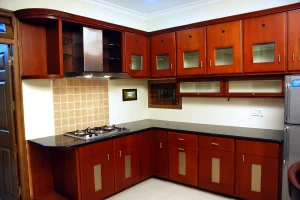Early Signs Of A Termite

Termites are a natural pest to your home that can cause serious damage if they get a hold of it. There are early signs of a termite that you can look for to tell if you have one in your home.
Wood that sounds hollow when tapped
Termites are small insects that can invade a home and cause thousands of dollars in damage. They burrow into the wood and leave a mess behind.
If you have wood that sounds hollow when tapped, this could be a sign of termites. It is a surprisingly reliable indicator of termite activity.
The hollow sound is one of the simplest and most effective ways to detect termite infestation. A solid wood piece will give a satisfying thud when tapped, but a hollow wood specimen will make a far more impressive noise.
This can be a signal of a more serious problem. The hollow sound is a result of termites eating away at the wood from the inside out. They will also leave a thin veneer of timber on the outside.
Termite mud tubes
Termite mud tubes are one of the most common early signs of a termite infestation. They are built by subterranean termites and are located around foundations, wood structures and other areas where termites hide. They are made of fecal matter, soil and saliva.
If you find termite mud tubes, you should call an exterminator right away. Termites can cause serious damage if left untreated. They can destroy wooden floors, furniture and wall paper. They can also leave discarded wings and frass.
Termites use mud tubes as a way to travel. These tubes are designed to carry hundreds of termites per day. The size and color of the tubes can help you determine whether the problem is active or if it is a one-time incident. If you notice a large number of active mud tubes, it means that you have an active termite infestation.
Damage to wood
Termite damage to wood can be difficult to detect, but it’s important to know the signs so you can prevent it from worsening. Some of the early signs include dry wood termites, mud tubes, and tiny black droppings. These early signs of termite infestation can save you money and headaches.
Drywood termites, the insects that commonly attack wood, feed on cellulose. These insects form galleries in the wood and then tunnel through the structure. Their pellets often accumulate on window sills, under wooden objects, and on the baseboards.
Subterranean termites, the insects that live beneath the ground, feed on softwood along the grain. They will damage flooring, siding, railings, and doors. They will create a network of underground highways to their food source. They will also make noise, banging their heads, or shaking their bodies to warn their friends and other termites of the presence of an enemy.
Termite swarmers
Termite swarmers are one of the early signs of a termite infestation. These tiny insects are 3/8″ long and can be found on or inside a home. They are usually discarded after taking flight, but they are still an indication of a termite infestation.
If you notice a swarm, you can either brush it away or bring it to your local cooperative extension center for identification. There, a pest control service can give you more information about termite swarmers.
Termite swarmers can be found in the yard, on a window sill, or inside a home. The best way to know if you have a termite infestation is to have a professional inspect your home.
Termite swarmers are not great flyers. They are a bit smaller than a pencil, and they are typically white with rounded tips.
Termite antennae
Termite antennae are one of the most important sense organs for insects. They help detect vibrations, heat, odors, and touch. They also allow insects to move freely so that they can sense an environment that they may not be able to otherwise. They are also very small and are made up of bead-like segments.
Termite antennae can be found in various locations around the home. For example, they can be found in spider webs and near windows and doors.
Another sign of an invasion by drywood termites is piles of frass. They can look like sawdust or sand. These piles are usually located near window sills or doors. The frass looks similar to wood particles, but it contains moisture. This moisture causes the frame to warp.






